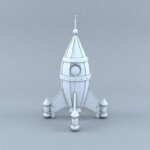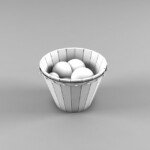1. Influence on cutting temperature: cutting speed, feed speed, reverse cutting quantity
Influence on cutting force: quantity of countercut, feed speed, cutting speed
Influence on tool durability: cutting speed, feed speed, reverse engagement
2. When the back cutting quantity is doubled, the cutting force will be doubled.
When the feed is doubled, the cutting force increases by approximately 70%
When the cutting speed doubles, the cutting force gradually decreases
In other words, if G99 is used, the cutting speed will increase, but the cutting force will not change much.
3. Based on the iron chip discharge, it can be judged that the cutting force and cutting temperature are within the normal range.
4. When the actual measured value) The R you chased may scratch the knife at the starting position.
5. The temperature represented by the color of iron filings: white is less than 200 degrees
Yellow 220-240 degrees
Dark blue 290 degrees
Blue 320-350 degrees
Purple black is above 500 degrees
Red is above 800 degrees
6. FUNAC OI mtc generally defaults to the G command:
G69: I’m not sure
G21: Metric size input
G25: Spindle speed fluctuation detection disconnected
G80: Fixed cycle cancellation
G54: default coordinate system
G18: selection of the ZX plan
G96 (G97): constant linear speed control
G99: Feed per revolution
G40: Canceling tool nose compensation (G41 G42)
G22: recorded stroke detection is activated
G67: Modal call of macro program canceled
G64: I’m not sure
G13.1: Polar coordinate interpolation mode canceled
7. The external thread is generally 1.3P and the internal thread is 1.08P.
8. S1200 thread speed/thread pitch*safety factor (generally 0.8)
9. Hand tool tip R compensation formula: chamfering from bottom to top: Z=R*(1-tan(a/2)) (a) From Just change the chamfer from least to most going up and down.
10. Every time the feed increases by 0.05, the rotation speed decreases by 50 to 80 rpm. This is because decreasing the rotational speed means that tool wear decreases and the cutting force increases more slowly, thus compensating for the increase in cut. strength and temperature due to increased power impact.
11. The influence of cutting speed and cutting force on the tool is crucial. Excessive cutting force is the main reason for tool collapse. The relationship between cutting speed and cutting force: the faster the cutting speed, the feed remains unchanged and the cutting force slowly decreases. At the same time, the faster the cutting speed, the faster the tool wears, making the cutting force larger and larger. , and the temperature will also increase. The higher it is, when the cutting force and internal stress are too great for the blade to handle (of course, there are reasons for this too, such as stress caused by temperature changes). and a reduction in hardness).
12. When processing CNC lathes, special attention should be paid to the following points:
1) At present, economical CNC lathes in my country generally use ordinary three-phase asynchronous motors to achieve stepless speed change through frequency converters. If there is no mechanical deceleration, the spindle output torque is often insufficient at low speed. too big, it’s easy to become boring. However, some machine tools are equipped with gears, which can solve this problem very well.
2) Try to ensure that the tool can finish processing a part or a shift. When finishing large parts, special attention should be paid to avoiding mid-process tool changes to ensure that the tool can be processed in one go.
3) When using CNC turning threads, use higher speed as much as possible to achieve efficient and high-quality production.
4), use G96 as much as possible
5), the basic concept of high-speed machining is to make the feed exceed the heat conduction speed, thereby discharging the cutting heat with the iron chips to isolate the cutting heat from the workpiece to be machined to ensure that the part does not heat up or heat up. Therefore, high-speed machining involves choosing a high cutting speed with high feed while selecting a smaller amount of backcut.
6), Pay attention to the tool tip compensation R
13. Workpiece material machinability classification table (small P79)
Commonly used thread cutting times and back cutting table (large P587)
Commonly used geometric calculation formulas (large P42)
Inches and millimeters conversion table (large P27)
14. Vibration and chipping often occur during grooving. The basic reasons for this are increased cutting force and insufficient tool rigidity. The shorter the tool extension, the smaller the clearance angle and the larger the blade area, the better the rigidity. cutting force, the larger the width of the grooving cutter, the cutting force it can bear will increase accordingly, but its cutting force will also increase. On the contrary, the smaller the slot cutter, the less force it can withstand, but it is. the cutting force is also low
15. Reasons for vibration during turning:
1) If the extension length of the tool is too long, the rigidity will be reduced.
2), the feed speed is too slow, which will cause the cutting force of the unit to increase and cause severe vibration. The formula is: P = F/back cutting quantity*f. P is the unit cutting force and F is the unit cutting force. cutting force. Additionally, the rotation speed is too fast. This also makes the knife vibrate.
3) The machine tool is not rigid enough, which means the cutting tool can resist the cutting force, but the machine tool cannot. To put it bluntly, the machine tool cannot move. Generally, new beds will not have this kind of problem. Beds that have this kind of problem are either very old or are often machine tool killers.
16. When sculpting a product, I found that the dimensions were good at first, but after a few hours, I found that the dimensions had changed and the dimensions were unstable. The reason may be that the knives were brand new at the beginning, so. the cutting force was too weak. It is not very large, but after rotating for a while, the tool wears out and the cutting force increases, causing the workpiece to move on the chuck, so the dimensions are often offset and unstable .
17. When using G71, the values of P and Q cannot exceed the sequence number of the entire program, otherwise an alarm will appear: The G71-G73 command format is incorrect, at least in FUANC .
18. There are two subroutine formats in the FANUC system:
1) The first three digits of P000 0000 refer to the number of cycles and the last four digits correspond to the program number.
2) The first four digits of P0000L000 are the program number and the three digits after L are the number of cycles.
19. If the starting point of the arc remains unchanged and the end point is shifted by one mm in the Z direction, then the position of the lower diameter of the arc will be shifted by a/2.
20. When drilling deep holes, the drill bit does not grind the cutting groove to make it easier for the drill bit to remove chips.
21. If you are using a tool holder to drill holes for tooling, you can rotate the bit to change the diameter of the hole.
22. When drilling stainless steel center holes or stainless steel holes, the center of the drill bit or center drill bit should be small, otherwise it will not be drilled. When drilling holes with a cobalt drill bit, do not grind the groove to avoid annealing. the drill bit during the drilling process.
23. According to the process, there are generally three types of cutting: single-piece cutting, two-piece cutting and whole bar cutting.
24. When an ellipse appears when donning, the material may be loose. Just use a dental knife to clean it several times.
25. In some systems that can enter macro programs, macro programs can be used instead of subroutine loops. This can save program numbers and avoid many problems.
26. If you use a drill bit to ream the hole, but the hole has significant runout, you can use a flat bottom drill to ream the hole, but the twist drill bit should be short to increase rigidity.
27. If you directly use a drill bit to drill a hole on a drill, the diameter of the hole may differ. However, if you enlarge the hole on a drill, the size will generally not change. 10mm drill bit to enlarge the hole on the drill, the diameter of the enlarged hole will generally be the same, with a tolerance of about 3 threads.
28. When digging small holes (through holes), try to roll the chips continuously and then eject them from the tail. Key points for rolling chips: 1. The knife position should be high enough. 2. The appropriate blade tilt angle. and the amount of cutting. In addition to the feed speed, remember that the knife cannot be too low, otherwise it will be easy to break the chips. If the secondary deflection angle of the knife is large, the chips will not get stuck in the tool. bar even if the chips are broken. If the secondary deflection angle is too small, the chips will remain stuck in the tool after the chips are broken. The pole is subject to danger.
29. The larger the cross section of the tool holder in the hole, the less likely it is to vibrate. You can also tie a strong rubber band on the tool holder, as the strong rubber band can absorb vibration to some extent.
30. When turning copper holes, the R tip of the knife can be larger (R0.4-R0.8). Especially when you turn the cone, the iron parts may be thin, but the copper parts will get stuck.
Daguang focuses on providing solutions such as precision CNC machining services (3-axis, 4-axis, 5-axis machining), CNC milling, 3D printing and rapid prototyping services.

















